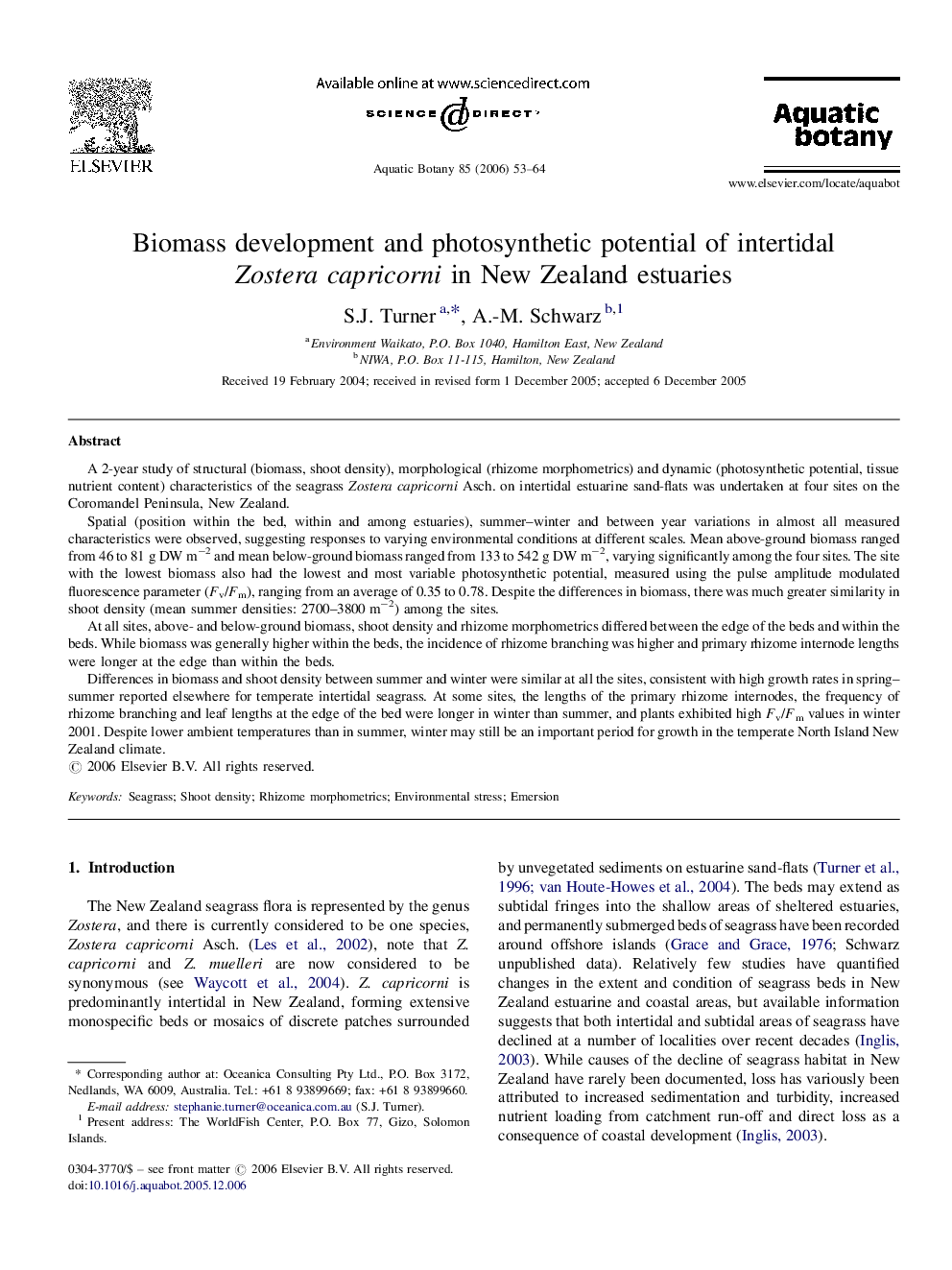| Article ID | Journal | Published Year | Pages | File Type |
|---|---|---|---|---|
| 4528759 | Aquatic Botany | 2006 | 12 Pages |
A 2-year study of structural (biomass, shoot density), morphological (rhizome morphometrics) and dynamic (photosynthetic potential, tissue nutrient content) characteristics of the seagrass Zostera capricorni Asch. on intertidal estuarine sand-flats was undertaken at four sites on the Coromandel Peninsula, New Zealand.Spatial (position within the bed, within and among estuaries), summer–winter and between year variations in almost all measured characteristics were observed, suggesting responses to varying environmental conditions at different scales. Mean above-ground biomass ranged from 46 to 81 g DW m−2 and mean below-ground biomass ranged from 133 to 542 g DW m−2, varying significantly among the four sites. The site with the lowest biomass also had the lowest and most variable photosynthetic potential, measured using the pulse amplitude modulated fluorescence parameter (Fv/Fm), ranging from an average of 0.35 to 0.78. Despite the differences in biomass, there was much greater similarity in shoot density (mean summer densities: 2700–3800 m−2) among the sites.At all sites, above- and below-ground biomass, shoot density and rhizome morphometrics differed between the edge of the beds and within the beds. While biomass was generally higher within the beds, the incidence of rhizome branching was higher and primary rhizome internode lengths were longer at the edge than within the beds.Differences in biomass and shoot density between summer and winter were similar at all the sites, consistent with high growth rates in spring–summer reported elsewhere for temperate intertidal seagrass. At some sites, the lengths of the primary rhizome internodes, the frequency of rhizome branching and leaf lengths at the edge of the bed were longer in winter than summer, and plants exhibited high Fv/Fm values in winter 2001. Despite lower ambient temperatures than in summer, winter may still be an important period for growth in the temperate North Island New Zealand climate.
